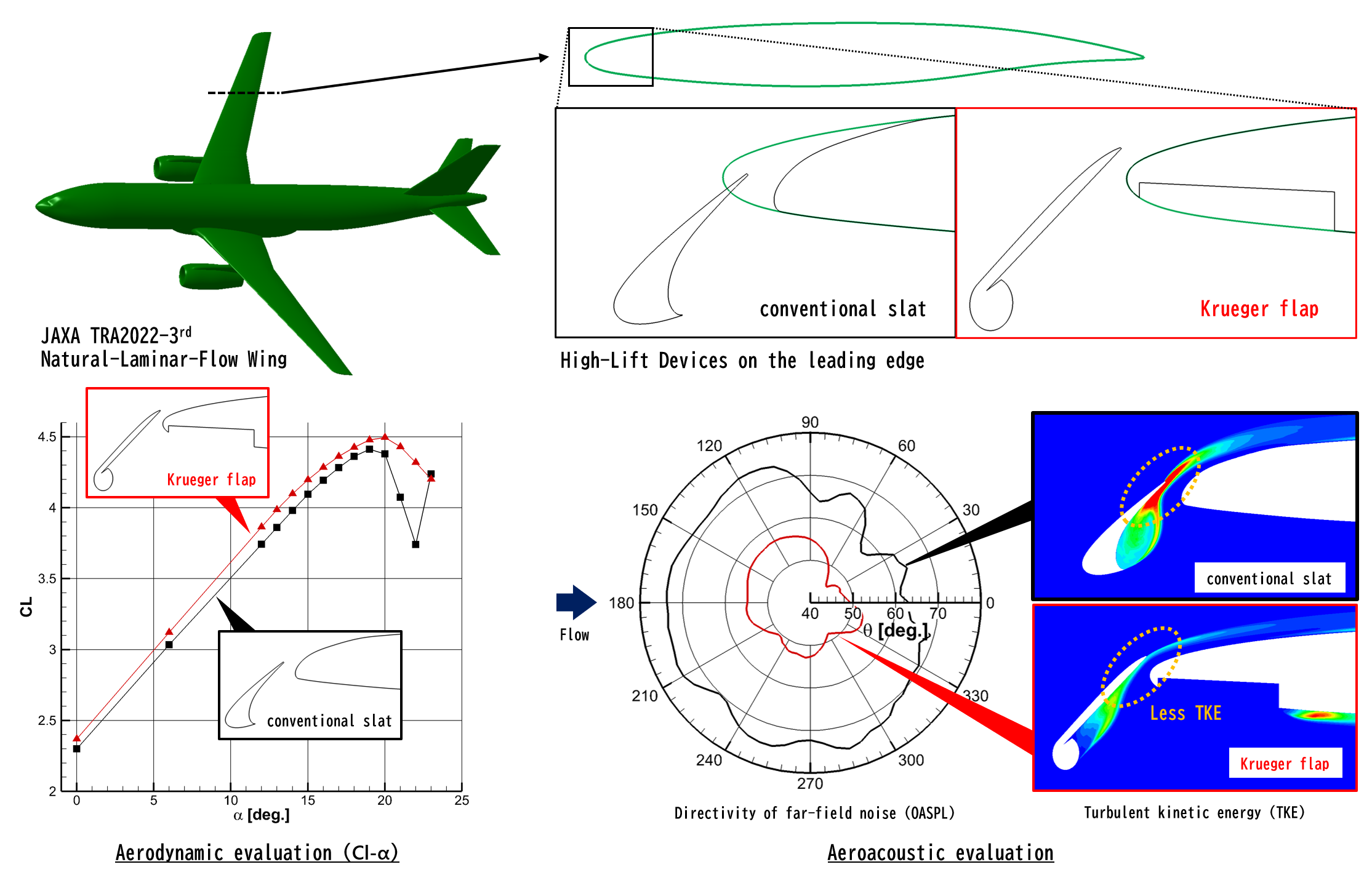Innovative Green Aircraft Technology : High Efficiency and Low Noise Aircraft II
JAXA Supercomputer System Annual Report April 2020-March 2021
Report Number: R20EA0602
Subject Category: Aeronautical Technology
- Responsible Representative: Yoshikazu Makino, Unit Head, Aeronautical Technology Directorate, Aviation Systems Research Unit
- Contact Information: Dongyoun Kwak, Aviation Systems Research Unit(kwak.dongyoun@jaxa.jp)
- Members: Takehisa Takaishi, Mitsuhiro Murayama, Yasushi Ito, Ryotaro Sakai, Tohru Hirai, Kentaro Tanaka, Kazuhisa Amemiya, Gen Nakano, Tomoaki Ikeda, Fumitake Kuroda, Keisuke Ohira, Dongyoun Kwak, Ryutaro Furuya, Junichi Kazawa
Abstract
The purpose of the iGreen research is to develop and mature a bunch of advanced and innovative technologies on aerodynamics, aeroacoustics, and structures to enable airframe design with higher environmental performances, thereby helping the Japanese aviation industry to enhance its share on the global market. In addition to verifying practical application of these technologies, we will also work on the development of elemental and system technologies.
Reference URL
Please refer to https://www.aero.jaxa.jp/eng/research/ecat/igreen/ .
Reasons and benefits of using JAXA Supercomputer System
The JSS is used to develop the airframe, engine, and interference noise prediction tools that have high or middle fidelities for applicable to MDO design with high fidelity CFD and FEM analysis, and to implement noise evaluation by using them. The airframe-engine installation and/or shielding effects are one of important key issues for the future aircraft. The accuracy of current low fidelity analysis for the airframe, engine, and interference noise prediction is not good enough for application to MDO design with high fidelity CFD and FEM analysis toward the future low-noise aircrafts. The JSS is necessary for development of high or middle fidelity noise prediction tools for competitiveness in technology.
Achievements of the Year
The Natural-Laminar-Flow (NLF) wing is one of key technologies to reduce fuel consumption; however, a conventional slat is against the NLF's concept due to discontinuities between a retracted slat and a main wing. As the alternative to the high lift device on the leading edge of the NLF wing, Krueger flap is taken into consideration, with other advantages such as the shielding effect for the leading edge against flying insects.
The aerodynamic design of the Krueger flap has been conducted for the NLF airfoil that has been extracted from the outer wing of JAXA Technology-Reference-Aircraft 2022-3rd (120-seat class). The obtained Krueger flap shows better aerodynamic performance than a conventional slat, as well as considerable reduction of airframe noise according to less turbulent kinetic energy at the trailing edge of the Krueger flap (Fig. 1). These results demonstrate the promising concept of the high lift device for the NLF wing in terms of both aerodynamics and aeroacoustics.

Fig.1: The aerodynamic design of the Krueger flap installed on the JAXA Natural-Laminar-Flow airfoil: comparison of aerodynamics and aeroacoustics with a conventional slat
Publications
N/A
Usage of JSS
Computational Information
- Process Parallelization Methods: MPI
- Thread Parallelization Methods: N/A
- Number of Processes: 1728
- Elapsed Time per Case: 110 Hour(s)
Resources Used(JSS2)
Fraction of Usage in Total Resources*1(%): 0.28
Details
Please refer to System Configuration of JSS2 for the system configuration and major specifications of JSS2.
| System Name | Amount of Core Time(core x hours) | Fraction of Usage*2(%) |
|---|---|---|
| SORA-MA | 1,593,847.68 | 0.30 |
| SORA-PP | 18,333.47 | 0.14 |
| SORA-LM | 1,011.78 | 0.59 |
| SORA-TPP | 0.00 | 0.00 |
| File System Name | Storage Assigned(GiB) | Fraction of Usage*2(%) |
|---|---|---|
| /home | 131.65 | 0.12 |
| /data | 9,296.54 | 0.18 |
| /ltmp | 2,946.92 | 0.25 |
| Archiver Name | Storage Used(TiB) | Fraction of Usage*2(%) |
|---|---|---|
| J-SPACE | 189.48 | 6.27 |
*1: Fraction of Usage in Total Resources: Weighted average of three resource types (Computing, File System, and Archiver).
*2: Fraction of Usage:Percentage of usage relative to each resource used in one year.
Resources Used(JSS3)
Fraction of Usage in Total Resources*1(%): 0.62
Details
Please refer to System Configuration of JSS3 for the system configuration and major specifications of JSS3.
| System Name | Amount of Core Time(core x hours) | Fraction of Usage*2(%) |
|---|---|---|
| TOKI-SORA | 3,310,184.13 | 0.71 |
| TOKI-RURI | 1,688.25 | 0.01 |
| TOKI-TRURI | 0.00 | 0.00 |
| File System Name | Storage Assigned(GiB) | Fraction of Usage*2(%) |
|---|---|---|
| /home | 340.13 | 0.23 |
| /data | 15,557.53 | 0.26 |
| /ssd | 219.64 | 0.11 |
| Archiver Name | Storage Used(TiB) | Fraction of Usage*2(%) |
|---|---|---|
| J-SPACE | 189.48 | 6.27 |
*1: Fraction of Usage in Total Resources: Weighted average of three resource types (Computing, File System, and Archiver).
*2: Fraction of Usage:Percentage of usage relative to each resource used in one year.
JAXA Supercomputer System Annual Report April 2020-March 2021


